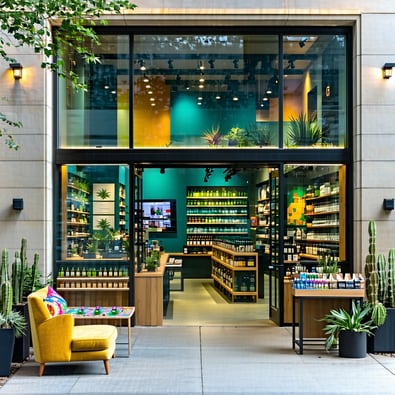Five years after medical cannabis became available in Utah after being legalized by voters, the program, while still controversial, keeps on growing. This year, the state counted over 100,000 medical cannabis card holders, a new peak in the program’s five-year existence.
Members of the Utah Patients Coalition, a plant medicine advocacy group which lobbied hard to help pass the 2018 referendum that allowed the medical cannabis program in deeply conservative Utah, see the milestone as a demonstration that the system to obtain a card is getting easier to navigate.
Even now that a major 2025 cannabis bill has gone into effect and eliminated a system that allowed for a cheaper, more accessible way to obtain a card, the group remains hopeful for the future of medical cannabis in the state.
“The growth in 2025 has been encouraging, just because we have seen a lot of patients struggling in the past. And every year we go back to the legislative session, we go back to our platforms with education, and just try to remove some of those barriers,” Desiree Hennessy, executive director at the Utah Patients Coalition, said on Monday.
One of the 2025 general session’s routine bipartisan medical cannabis bills, sponsored by Minority Whip Jennifer Dailey-Provost, D-Salt Lake City, and Sen. Evan Vickers, R-Cedar City, went through several iterations and proposed allowing more medical cannabis pharmacies in the state. But, it didn’t make it to a vote on the Senate floor, ultimately failing.
Most of the provisions of the House bill, including new licenses for pharmacies, were included in HB54, another bill sponsored by Dailey-Provost that passed, allowing 17 pharmacies to operate in the state, up from 15.
However, SB64, another bill sponsored by Vickers, also became law, containing a provision that Utah Patients Coalition considered “a heartbreaking loss.”
Up until this month, pharmacies were allowed to partner with clinics that have medical providers qualified to prescribe medicinal cannabis to host “card drives,” a sort of pop-up clinic in pharmacies’ parking lots in which doctors could see patients and issue cards, often at a discount.
Those partnerships allowed cards, which are good for up to a year, to go from a regular $200 to about $75, Hennessy said.
“This year, we lost the ability to allow pharmacies to do that. So now no longer can somebody write a card within 500 feet of a pharmacy unless they’re in their own business,” she said. “And so it’s really not going to hurt anybody that’s middle class or higher, but these patients struggling with finances that used these card drives.”
That was one of the last additions to Vickers’ bill. He explained on the Senate floor that the bill’s authors didn’t feel like the pop-ups were appropriate, and patients should be going to a doctor’s office for medical advice.
“If someone is a qualified medical professional, they can’t go to a pop-up tent in front of the marijuana pharmacy to give cards. We want to make sure that we are not producing a recreational environment,” SB64’s House floor sponsor, Rep. Walt Brooks, R-St George, told House members about the change.
But, with that loss, also came some flexibility on who gets to recommend medical cannabis to a patient. Now, medical providers who are licensed to prescribe controlled substances can recommend the treatment, which according to a Department of Health and Human Services April report is mostly used to treat pain.
According to Hennessy, that change would improve patient accessibility.
“Patients can go to their regular care physician, hopefully not get charged any more than a co-pay, and have this medical cannabis conversation with their doctor,” she said.
While advocates celebrate the numbers, the program remains a contentious point among Utahns, with some still protesting the annual technical bills, arguing that the state shouldn’t allow cannabis at all.
But, ultimately, Hennessy hopes that medical cannabis patients get to be treated like those receiving any other treatment. Especially, she said, since the program has been demonstrated to lower rates of opioid use and opioid-related deaths, according to a study by Management Science Associates in partnership with Dragonfly Wellness, a medical cannabis pharmacy.
“We do believe that there’s a lot of good that can come out of using medical cannabis as a first-line drug, and not as a second or third or fourth when everything else fails,” Hennessy said, “but we could use this first and treat a lot of conditions with a lot less risk than other medications that patients are now using.”
Correction: A previous version of this story didn’t specify that while an initial bill allowing for additional licenses for medical cannabis pharmacies failed, another House bill passed that increased the number of licenses.





